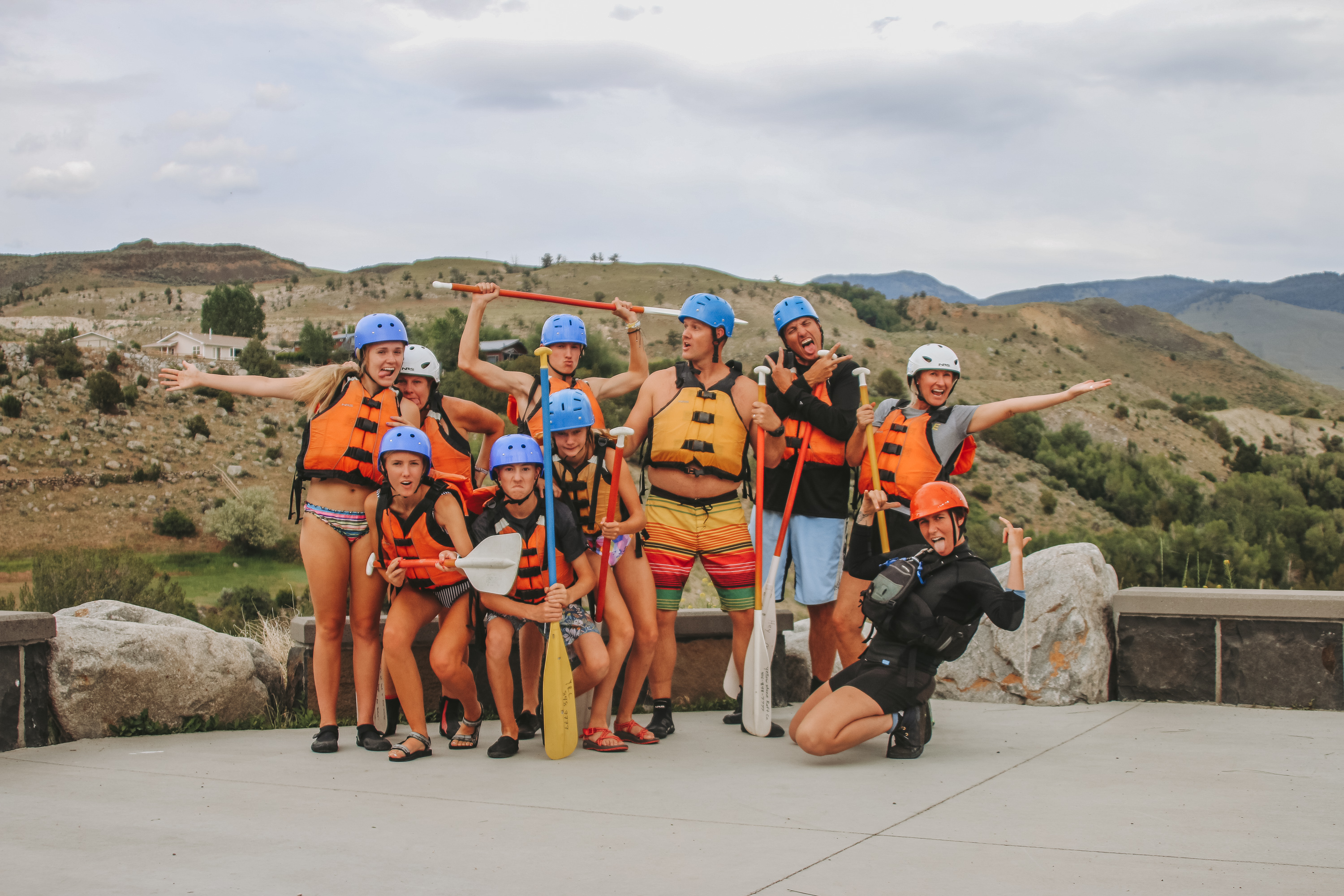What should I wear rafting (or floating)?
Before embarking on your white water rafting, kayaking, or even scenic float adventure the first question you might have is “What do I wear??”.
This is one of our most FREQUENTLY asked questions, and rightfully so, its definitely an important one. So, we’ll get right to it, here are the Do’s, and Don’ts of dressing for the river.

Want photos of your trip, and all the splash shots too? If you haven’t already, purchase a photo package now and save $10!
The Do’s
1. Layers
The weather in Southwest Montana is ever-changing and often unpredictable, and the best way to combat the swings in Yellowstone’s weather is, you guessed it, layers. In the summer, you will want anywhere from two to three layers depending on the time of the season and weather patterns of the day. Here are the basics to get you started:
- Top & Bottom Base Layers: Ideally swim or athletic wear, quick-drying is key here.
- Insulating Layers: Often in the summer this is a pair of shorts and a shirt, again synthetic is best for quick drying.
- Protective Layers: On cooler days, a fleece long-sleeved shirt or heavier synthetic top will usually do.
The Don’t: NO COTTON! Trust us on this one, wet cotton is uncomfortable and cold.
2. Footwear
In the boat and on the river, your footwear is equally as important as the clothes on your back. You will need shoes that are both good on terrain AND in the water. We have made a list of the ideal shoe types for the river for your reference here:
- An Outdoor Sandal such as a Chaco or Teva
- Water Shoes
- Good ole Tennis Shoes
The Don’t: No flip flops or slides. Flip flops or slides are easily lost in the current and have little to no traction.
3. Extras
Of course, there are a few miscellaneous items that you will want to bring with you to have available before and after your Yellowstone white water adventure. This list of items will be kept in your car and/or used before we head to the river access. Not to worry, you can leave your keys at the front desk for safekeeping.
- Water Bottle: Be sure to hydrate before your trip and have some water for after.
- Sun Block: You will want to protect your skin before we hit the road, the mountain sun is intense and the reflection off the water takes it to a whole other level.
- Sunglasses with Retainer: Sunglasses are equally important to protect your eyes and we highly recommend a retainer to keep them around your neck. Many sunglasses have been lost to the Yellowstone river without them. We have these available for purchase at the shop or if you haven’t booked yet you can add them when you book.
- Towel & Change of Clothes: Changing rooms are available and depending on your plans for the rest of the day or evening a change of clothes can be a welcome sight.
The Don’t: Bring your phone or camera at your own risk. The scenery is beautiful but boats get wet, so is the river.
4. Gear
Wait what about gear?? Helmets, wet suits, etc. All gear is included. Helmet, lifejacket, booties, splash jacket, and wetsuit (if needed). All of this is available to you at no extra cost and your guide will advise what is needed and what is unnecessary for the day’s trip.


Recent Comments